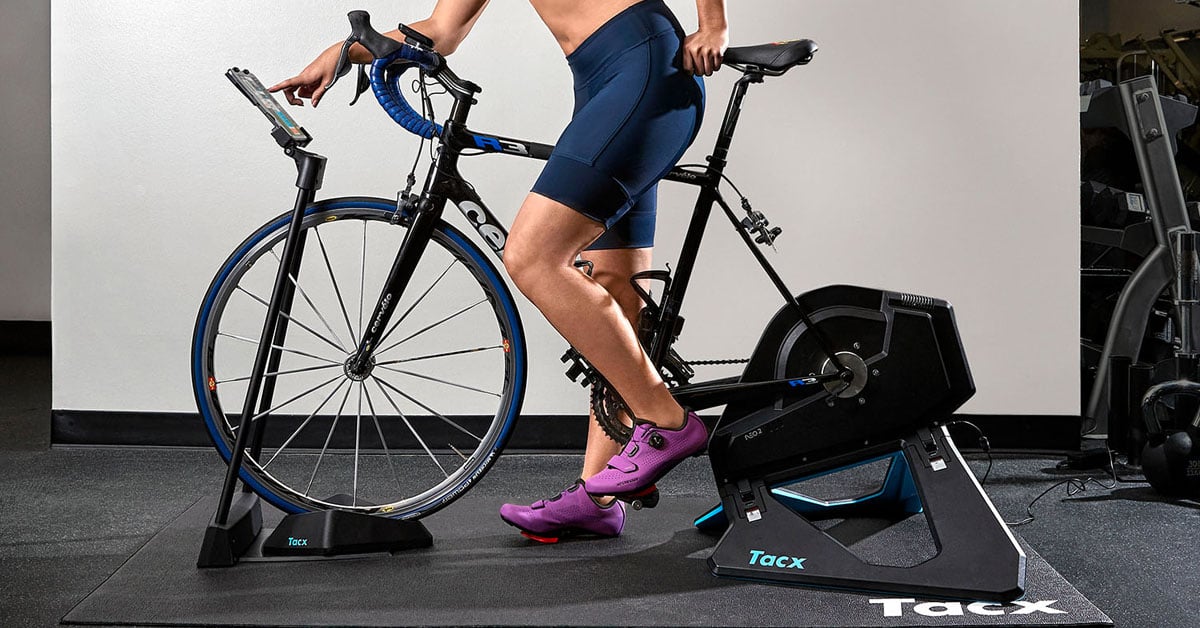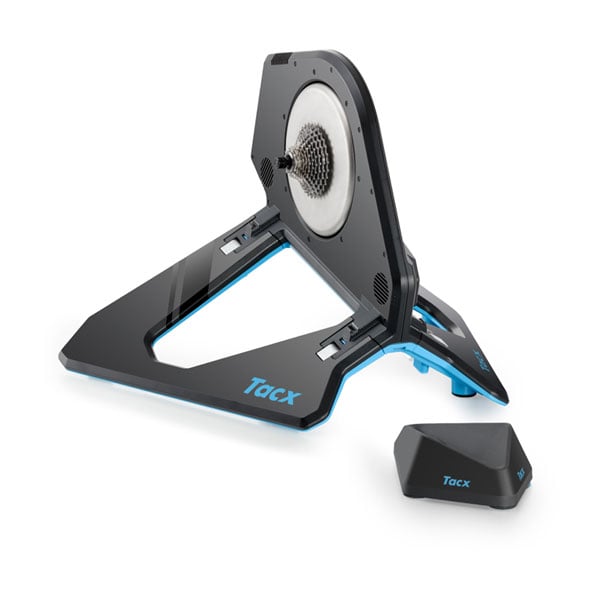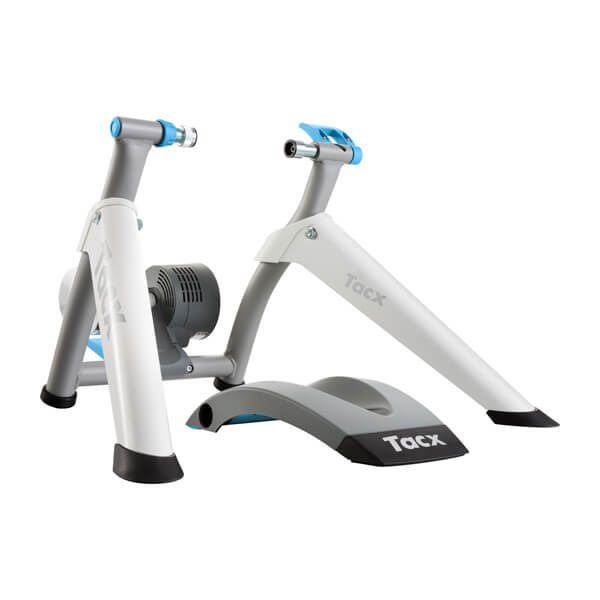
Using a Smart Trainer to Reverse Your Biological Age
While most of us keep track of age by counting the passing years, true age is reflected in your biology. By stimulating your mitochondria, honing your diet, shedding excess weight and triggering autophagy, you can start reversing your biological age today.
Biological Age vs. Chronological Age
Biological age is the most accurate predictor of longevity. This metric is determined by how well your brain and muscles work, how well regulated your hormones are, and how much general wear and tear you’ve put your body through. Unlike chronological age, our biological age truly reflects how old we are.
Poor diet and unhealthy amounts of stress can often lead to increased biological aging. As a result, hard-charging cyclists living on sugar and refined carbohydrates are often surprised to find that their biological age exceeds their chronological age.
How Telomeres Hold the Key to Aging
When it comes to determining biological age, the answer can be found in the length of your telomeres. Telomeres are the caps at the end of each strand of DNA. They protect our chromosomes in the same way that a plastic tip on the end of a shoelace protects it from unravelling.
As we age, our telomeres tend to get shorter. But when this happens at too fast a rate, problems quickly begin to arise. Our DNA becomes unprotected and unravels, much like a shoelace tip. With shortened telomeres, dividing cells struggle to replicate exact copies, and this makes diseases such as cancer much more likely.
It may sound concerning, but the good news is that there are ways to help lengthen telomeres and decrease biological age. And what’s more, you may be surprised by just how easy this is to do with effective training.
How a Smart Trainer Can Help Slow the Aging Cycle
Our culture often attributes cycling with good health, but that’s not always the case. Some cyclists get it wrong. Intense training, insufficient recovery, stress and suboptimal diet all accelerate biological aging. Here’s how you can use your smart trainer to begin reversing your biological age today.
For Longer Telomeres, Drop Excess Weight
Science supports the correlation between body weight and biological age. A 2005 study carried out at St Thomas’ Hospital in London showed that maintaining your ideal body weight can help lengthen telomeres by 9 years.
See the Benefits of a Low-carb Diet
The consumption of high-glycemic carbohydrates produces an insulin spike to help lower blood sugar. But when this is done too often, or the spikes are simply too high, many become insulin resistant.
In this state, it becomes more difficult to metabolize carbohydrates. The body resorts to converting the excess to visceral fat rather than storing it as muscle glycogen. The resulting inflammation wreaks havoc on the body. It leads to fat deposition, hormonal dysregulation, and ultimately, increased biological aging.
Targeting weight loss should be a two-pronged approach between diet and exercise. While most people can incorporate some simple dietary changes into their routine, those cyclists feeling a little more ambitious may try becoming fat adapted. A well-honed diet coupled with some smart trainer workouts to increase fat burning will go a long way toward slowing down biological aging.
Try a Smart Fat-burning Workout
While many believe that low-intensity exercise is more effective for fat burning, it turns out that incorporating some intensity may be more effective.
By exercising in the power zone 4 or 5, you stimulate your fat-burning metabolism to a much greater degree. Your body quickly burns through its carbohydrate stores and once depleted, the body will revert to fat for energy. Interestingly, the real fat-burning benefits come in the 4 hours post-workout — something that’s key to any long-term weight loss goals.
Here’s a workout that will stimulate your fat-burning metabolism.
- 15-minute warm-up
- 3 x 10-minute intervals at threshold with 5 minutes rest in between; increase interval time as you improve by 2 minutes each time
- Ride for the remainder of the time in zone 2
- Cool down
Fasted Workouts and Autophagy
Autophagy is an old Greek word that means “eating of the self.” It’s the process by which the body carries out a cellular clean up. Anything that’s old or damaged within our cells is efficiently recycled via a natural process that keep cells young and functioning optimally. During a smart trainer workout, autophagy can be initiated in one of two ways.
Fasting
By working out in a fasted state, you force your body to use up what is already stored within. Fasted workouts are best carried out in the morning when glycogen supplies are depleted. With limited fuel, the body will quickly revert to using up damaged cellular material.
This process is initiated regardless of exercise intensity and when done regularly, it leads to decreased aging over time. If you are training intensely or peaking for an event, then occasional fasting may be all that’s required.
Intermittent Fasting
Although fasting is effective in activating autophagy, it isn’t something that a hard-charging cyclist can sustain for long. Cyclists require a stable flow of calories. Too much fasting can be detrimental to performance and health with continued training.
Intermittent fasting involves eating within a time window – 16 hours of fasting followed by an 8-hour eating window is a manageable protocol for many beginners.
But for those who can’t forgo food for 16 hours, studies suggest that restricting protein intake is another powerful way to trigger autophagy. By consuming less than 25 grams of protein per day, you’ll help your body carry out the spring cleaning that is autophagy.
That’s why many people opt to do a protein fast one day per week. It’s always best done on a rest day, but if you do decide to use your smart trainer during a protein fast, opt for low-intensity rides. A short workout in the endurance zone (power zone 2) won’t break down your muscles in the same way an intense sprint session will.
Maximize Energy Production: Upgrade Your Mitochondria
Your mitochondria are responsible for taking nutrients into a cell and producing the energy you need to function. Everything from generating the force required for an all-out sprint to the act of breathing itself is made possible by the energy produced by mitochondria.
Pro cyclists tend to peak in their late 20s. In fact, the average age of a Tour de France winner is 28. One of the reasons for this is that our mitochondria produce less energy as we age. Without intervening in the process, we all experience reduced capacity during intense efforts as we age.
The best way to upgrade your mitochondria and ensure that performance tapers off gradually and naturally is to train at high intensity.
The Benefits of HIIT
High-intensity interval training (HIIT) is the best way to improve mitochondrial function. It increases both the rate at which the mitochondria produce energy and the total amount of energy they produce.
When it comes to incorporating HIIT into your smart trainer program, that involves taxing your VO2 max, anaerobic capacity and neuromuscular zones. And remember, anyone with a heart condition should always consult their doctor before exercising at high intensity.
A Smart Trainer Interval to Tune Up Your Mitochondria
It doesn’t take a major time commitment to stimulate your mitochondria. At 35-45 minutes, the HIIT routine shown below will boost mitochondrial function dramatically.
- 15-minute warm-up
- 30 seconds all-out sprint
- Ride easy for 4 minutes
- Repeat 6-8 times
While this workout targets the neuromuscular zone, it can be tailored to tax either the VO2 max zone (105-120% of FTP) or the anaerobic capacity zone (121%-150% of FTP). When training the VO2 max system, the length of each interval will be between 3-5 minutes, while anaerobic capacity will be in the 1-3-minute range.
Forever Young
These tips will go a long way toward keeping those protective telomeres of yours from shortening prematurely. And while no cyclist has the same speed in their legs at 60 years old as they did at 30, it’s the anti-aging benefits of these routines that help ensure we age with grace and continue to enjoy the sport of cycling into a ripe old age.
By Jack Stafford, specialist cycling copywriter who lives and rides in southern Italy.
The information provided through our blog is not intended to be and is not a substitute for professional medical advice, diagnosis or treatment that can be provided by your own health care professional. Garmin makes no attempt to diagnose, treat or cure any physical ailment, or any mental or emotional issue, disease or condition. Our blogs are intended to help you reach your own health and wellness goals.






